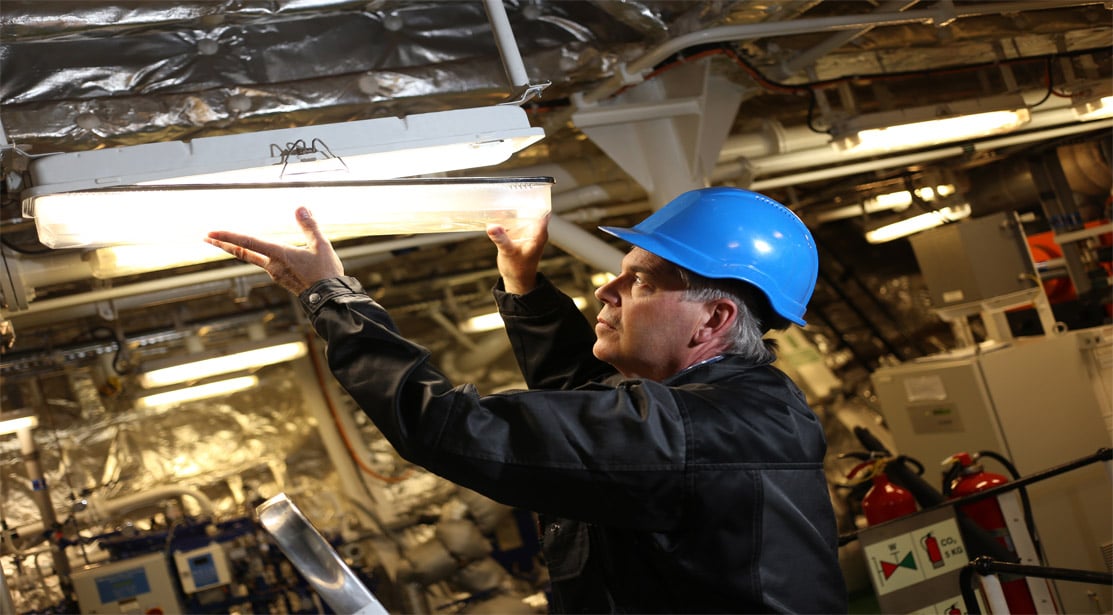Hazardous areas are explosive atmospheres created by gases, vapours and ignitable dusts or fibres. They can typically be found in places like oil/gas rigs, processing refineries, chemical production facilities, flammable liquid storage facilities, during fuel transport, at petrol stations, in paint and paper production facilities, etc.
It’s important for the lighting products to actually be designed for use in actual hazardous areas, and for their operation and maintenance to comply with the appropriate requirements. The luminaire housings are often made of aluminium/zinc coated or stainless steel and include external batteries for emergency lighting and extending their lifetime.
Ex hazardous area classification
The ATEX equipment directive no. 2014/34/EU for Equipment and protective systems is intended for use in potentially explosive atmospheres. ATEX and IEC Ex define atmosphere groups depending on the type and presence of gases and dust. Site owners must classify areas where hazardous explosive atmospheres may occur into zones.
Hazardous areas are classified into zones (0, 1 and 2 for gases, vapours and mists and 20, 21 and 22 for dust). These hazardous zones must be protected against sources of ignition. Explosion-proof fittings meant for use in Ex-classified areas must meet the requirements of the directive. Zone 0 and 20 require Category 1-marked equipment, zone 1 and 21 require at least Category 2-marked equipment, and zone 2 and 22 require at least Category 3-marked equipment. Zone 0 and 20 are the zones with the highest risk of an explosive atmosphere occurring.

Depending on their minimum ignition energy, gases are classified in maximum surface temperature classes ranging from T1 = 450°C to T6 = 85°C.
Glamox has vast experience with the most extreme explosive conditions in the North sea. We produce luminaires suited for Zone 1/21 and Zone 2/22 (Ex-n) and for maximum surface temperature classes T4 (135°C) to T5 (100°C).
